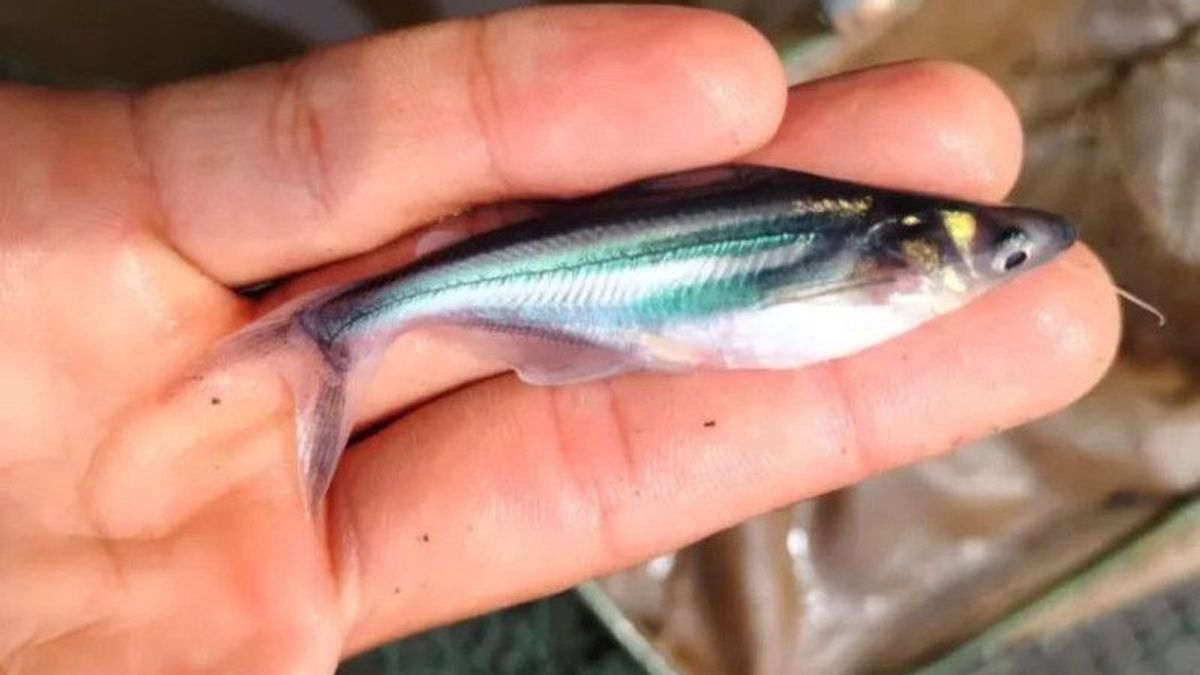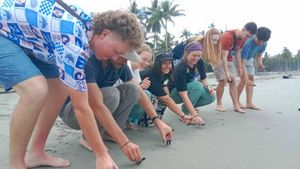YOGYAKARTA - Professor of Fishery Resources Management at the Faculty of Agriculture, Gadjah Mada University (UGM) Prof. Djumaranto said that the existence of wader fish (Rasbora lateristriata) in nature is threatened with extinction.
"A fish species that are vulnerable, namely wader fish (Rasbora lateristriata) can be critical when the quality of the wader's habitat has decreased very drastically, so it is not suitable to breed," said Djuanto, quoted from the official UGM website in Yogyakarta, Antara, Thursday, May 11.
According to Djuanto, there are a number of main factors that threaten the existence of original freshwater fish in land waters, including wader fish.
The threat, he said, is very high with quite various types, one of which is how to catch fish that are not environmentally friendly, for example using destructive fishing gear such as wearing a stun or electric shock.
In addition, the behavior of fish anglers and underresponsible fish fans such as releasing certain fish species resulting in a decrease in the population of prey fish.
According to him, introduction of invasive foreign species can be a competitor or a native fish predator.
"Fishes with low risk status can become vulnerable if the rate of arrest and other anthropogenic disturbances is very high," he said.
He said the public land waters in DIY still have 47 types of fish including 42 local or native fish and five types of introduction fish, namely red devil, guppy, tilapia, sweeping, and sword tail.
Meanwhile, based on its status, fish have a low risk status of 83 percent, fish have not been evaluated by 13 percent, while those with data information status are less and vulnerable to two percent each.
The protection and preservation of native fish, said Djumanto, can be done in several ways, namely the use of controlled fish, the manufacture of reservoirs, spread or restocking, invasive fish control, domestication of native fish, and modification of breeding habitats.
Regarding the modification of colonialism, Djumanto explained that most fish breed to coincide during the rainy season when there is abundant water and good quality.
Meanwhile, in the pari (Rasbora lateristriata) fish that live in the Ngrancah river, the colonial Kulon Progo occurs in the transition of the rainy and dry seasons when the air temperature is low and the oxygen content is high.
He said that colonization can be done by providing a breeding habitat in the form of basins measuring about 2x1 square meters and average water depth of 30 cm with a base substrate of sand on the river side can trigger pari wavers to come and colonize.
More and more basins as breeding habitats along the river side can increase the chance of wader pari fish to colonize so that the population will be high.
The same mode can be used for other types of fish that are targeted to be conserved, for example in gong fish (Nemacheilus fasciatus).
He said maintaining the diversity of native fish can go through various methods, including involving community groups through education, competitions, or competitions, and other tourism activities.
"Invasive fish control can be done by educating and preventing invasive fish from spreading in public waters," he said.
SEE ALSO:
The English, Chinese, Japanese, Arabic, and French versions are automatically generated by the AI. So there may still be inaccuracies in translating, please always see Indonesian as our main language. (system supported by DigitalSiber.id)
Most Popular Tags
#Prabowo Subianto #New Year #airplane accident #Hasto Kristiyanto #nataru #squid game 2Popular
04 Januari 2025, 00:04













